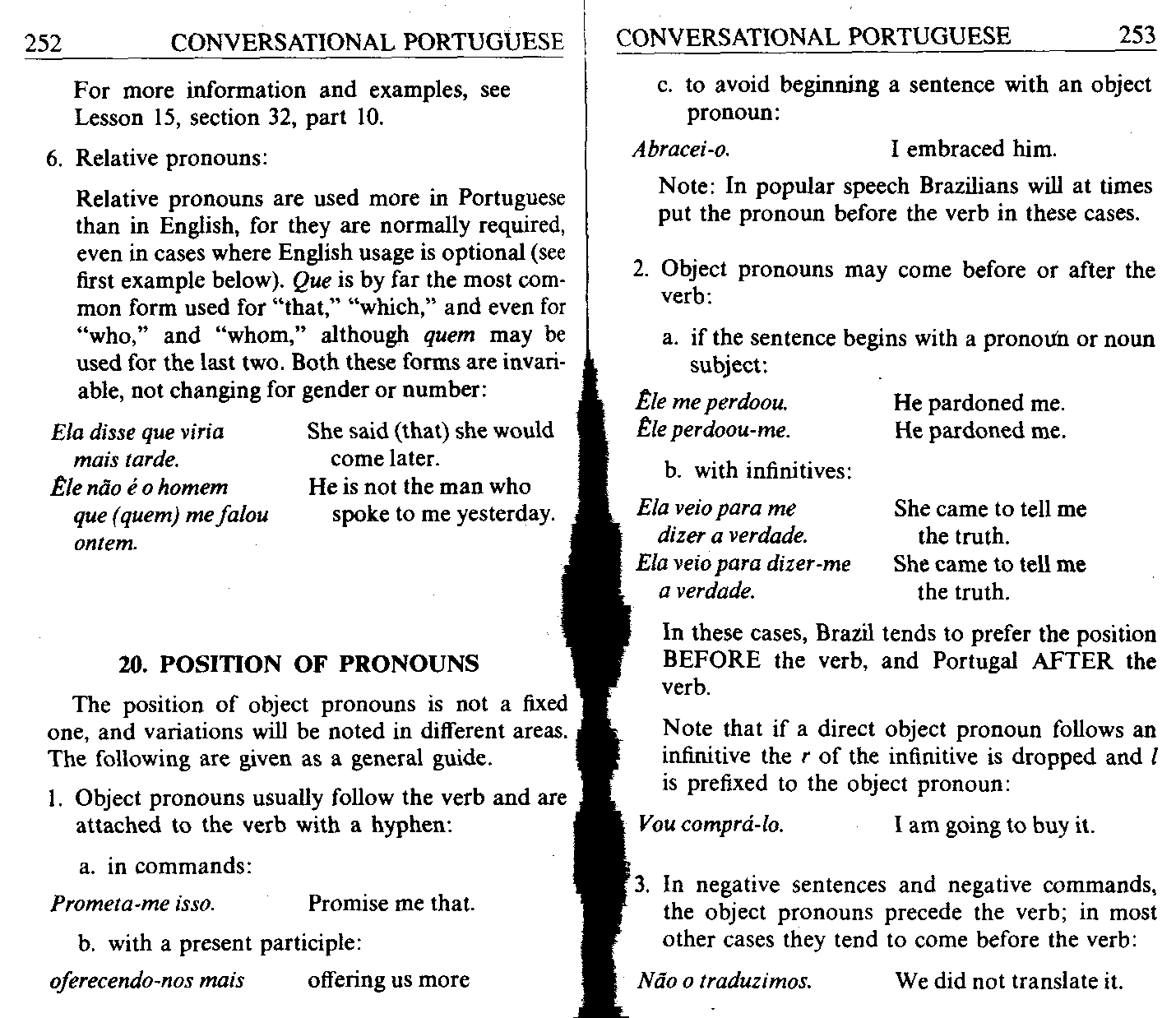Summary p252

252 CONYERSATIONAL PORTTJGUESE
For morę Information and example$, see Lesson 15, section 32, part 10.
6. Relative pronouns:
Relative pronouns are used morę in Portuguese than in English, for they are normally reąuired, even in cases where English usage is optional (see first example below). Que is by far the most com-mon form used for “that,” “which,” and even for “who,” and “whom,” although quem may be used for the last two. Both these forms are invari-able, not changing for gender or number:
Ela disse que viria mais tarde.
Źle nao e o homem ąue (quem) me fałou ontem.
She sald (that) she would come later.
He is not the man who spoke to me yesterday.
20. POSITION OF PRONOUNS
The position of object pronouns is not a fixed one, and variations will be noted in different areas. The following are given as a generał guide.
1. Object pronouns usually follow the verb and are attached to the verb with a hyphen:
a. in commands:
Prometa-me isso. Promise me that.
b. with a present participle:
oferecendo-nos mais offering us morę
c. to avoid beginning a sentence with an object pronoun:
Abracei-o. I embraced him.
Notę: In popular speech Brazilians will at times put the pronoim before the verb in these cases.
2. Object pronouns may co me before or after the
verb:
a. if the sentence begins with a pronoun or noun
subject:
źle me perdoou. He pardoned me.
£leperdoou-me. He pardoned me.
b. with infinitives:
She came to tell me the truth.
She came to tell me the truth.
Ela veio para me dizer a verdade.
Ela veio para dizer-me a verdade.
In these cases, Brazil tends to prefer the position BEFORE the verb, and Portugal AFTER the verb.
Notę that if a direct object pronoun follows an infinitive the r of the infinitive is dropped and / is prefixed to the object pronoun:
Kom comprd-lo. I am going to buy it.
3. In negative sentences and negative commands, the object pronouns precede the verb; in most other cases they tend to come before the verb:
Nao o traduzimos.
We did not translate it.
Wyszukiwarka
Podobne podstrony:
17f8d56f2e5b1f624321b43d16416f22 Morę Than Words Can Convey httńguedf For morę information cali 339-
guest operating system. Set the guest operating system to Red Hat (64-bit), then try again. For morę
17f8d56f2e5b1f624321b43d16416f22 Morę Than Words Can Convey httńguedf For morę information cali 339-
javafx chrome (2) ^ Java Please give Java permission to run on this browser page. Click for morę inf
więcej podobnych podstron